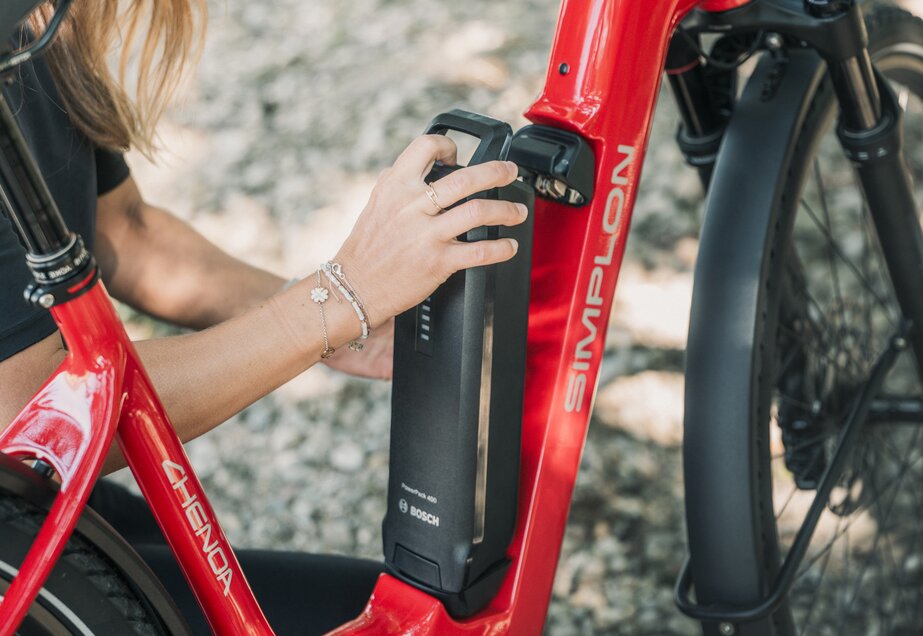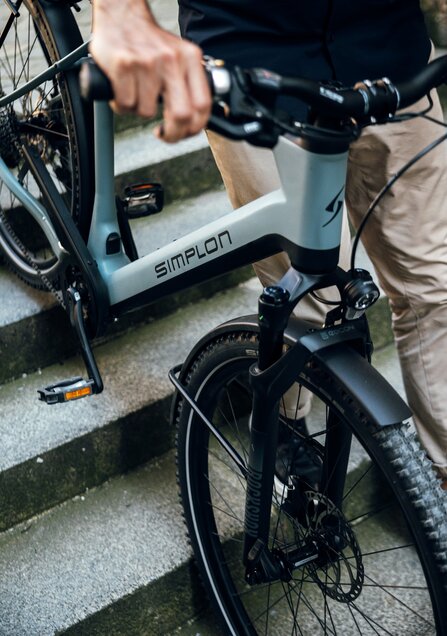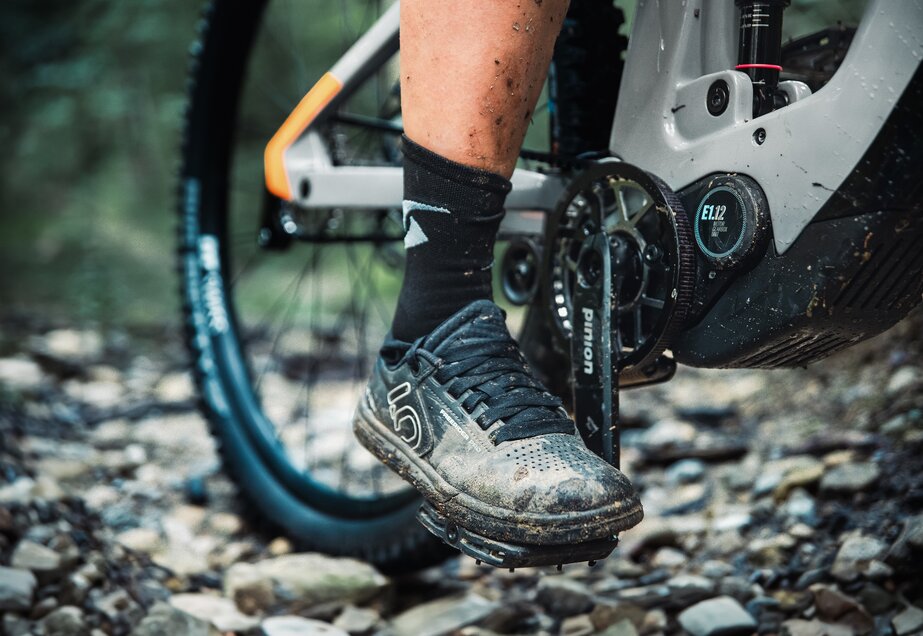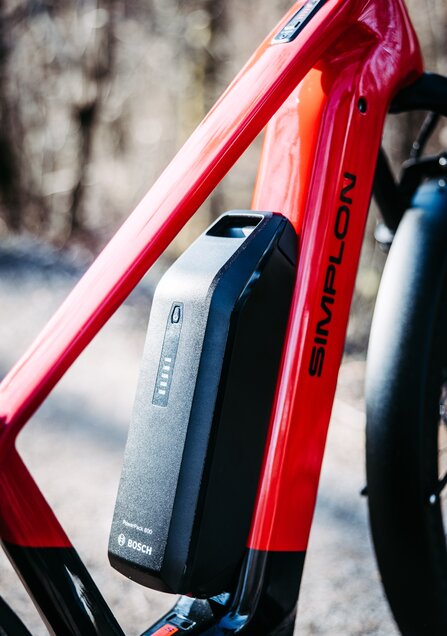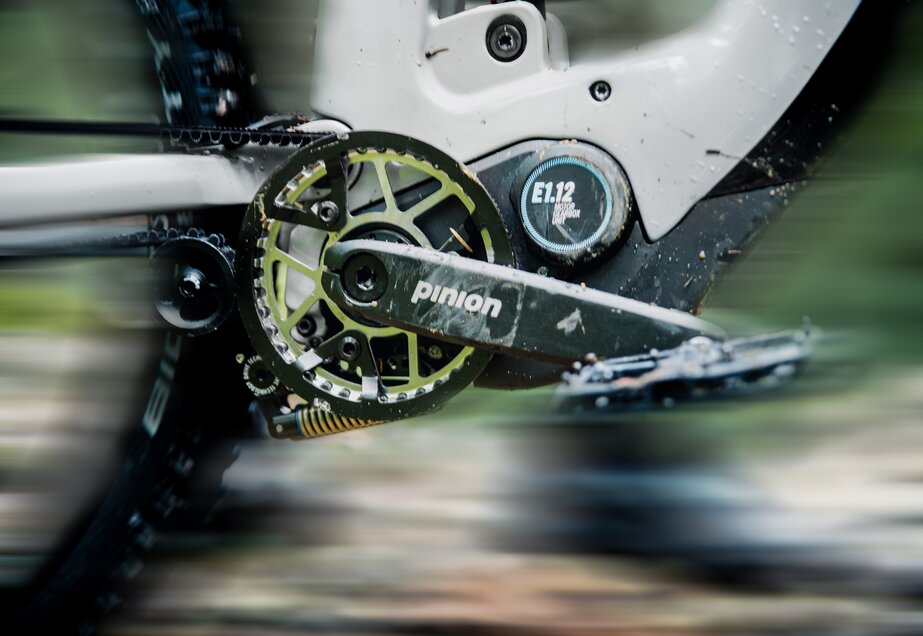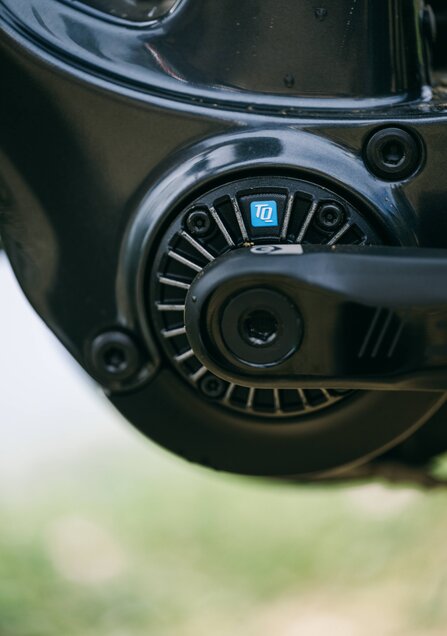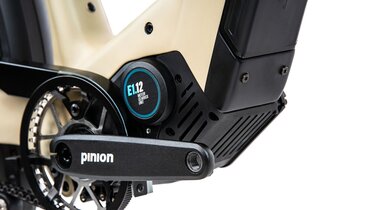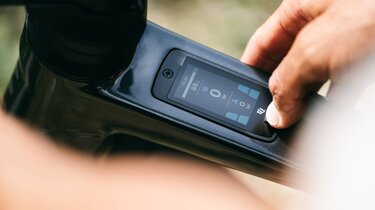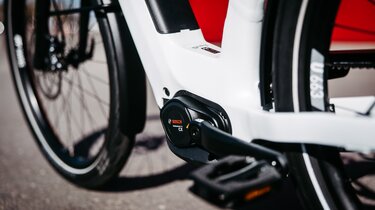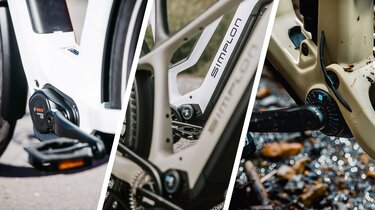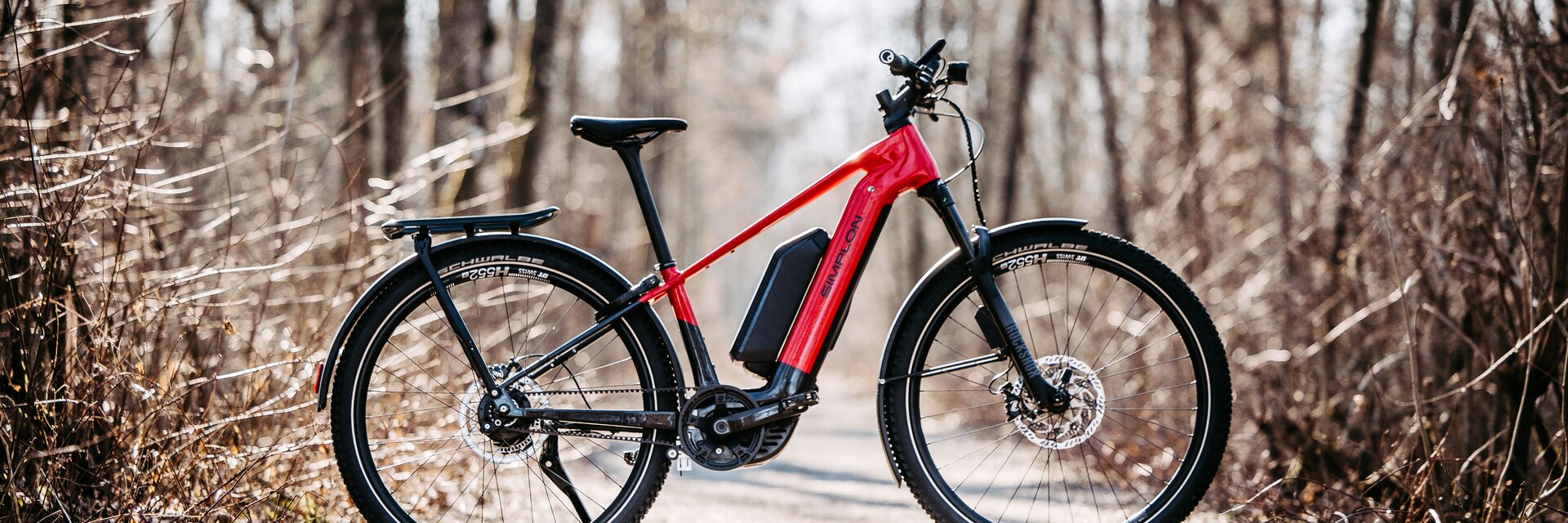

The E-Bike Motor Explained Simply
In the SIMPLON Magazine, you’ll learn why it’s no longer just the motor’s power that matters—but the overall drive system concept.
The E-Bike Motor: The Heart of Your E-Bike
So, what exactly is an e-bike motor? Simply put, it’s an electric drive unit that assists you while pedaling. It helps you ride faster and with less effort—especially useful on climbs, against headwinds, or on longer rides.
The key components:
- Motor: Provides pedal assistance. On SIMPLON bikes, it’s positioned near the bottom bracket. This “mid-drive motor” enables a natural riding feel and optimal weight distribution.
- Battery: Supplies power to the motor
- Sensors: Measure cadence, torque, and speed to regulate assistance
- Control unit on the handlebar: Lets you select assistance levels and view info (e.g., battery level)
How Does an E-Bike Motor Work?
The motor is powered by a battery and only kicks in when you pedal. Once you start riding, sensors detect movement and measure how hard and fast you're pedaling. The motor responds by providing more or less electric assistance depending on the support level you've selected. You can choose modes using a handlebar-mounted control panel—for example, "Eco" for light support or "Turbo" for full power. The battery, located in the bike’s frame on SIMPLON models, supplies the energy.
E-Bike Support Levels
Most motors offer 3 to 5 support modes (e.g., Eco, Tour, Sport, Turbo), which you can switch between depending on your needs. The higher the level, the more support—and the more energy consumed.
In the EU, regulations define how fast an e-bike may go. So-called “pedelecs” (pedal electric cycles) provide assistance up to 25 km/h, with a maximum power output of 250 watts—no helmet required. In contrast, “S-pedelecs” offer support up to 45 km/h and are classified as mopeds, requiring a helmet and insurance.
Range and Durability
How long does a battery last?
A modern e-bike battery typically lasts 500 to 1,000 full charge cycles—equating to about 3 to 7 years, depending on use. Key factors include how often you charge, how you store the battery, and how you ride. Batteries don’t like being fully discharged or fully charged for long. The ideal charge level is 20–80%.
The more support you want, the bigger the battery you’ll need:
- Urban/short rides: 300–500 Wh is often enough
- Tours/mountains: 625–750 Wh + DualBattery or range extender
How long does a motor last?
A high-quality e-bike motor can last between 15,000 and 25,000 kilometers—or more—depending on the model, maintenance, and care. Mid-drive motors are generally more durable than hub motors due to better cooling and protection.
More Range: Dual Battery vs. Range Extender
If you’re planning long rides, you may wonder: Is one battery enough? Two main options extend your range—DualBattery systems and range extenders—each with different applications.
DualBattery setups use two full-size batteries built into the bike, offering up to 1,600 Wh of energy (e.g., on the Cure :e), managed intelligently by the motor system. Ideal for commuters, heavy users, and mountain riders.
Range extenders are compact external batteries that can be added as needed—often mounted where a bottle cage would sit. Popular with lightweight or sporty bikes like the Rapcon :ePinion, they offer flexibility, save weight, and deliver extra energy when truly needed.
It’s Not Just About Motor Power
You’ll often hear: “The more powerful, the better.” But is that true?
Motor power is measured in watts—specifically the “nominal power.” Legally, this is limited to 250 watts over a 30-minute period. However, motors can deliver much more power briefly, especially during acceleration. The actual drive force is expressed in torque, measured in Newton meters (Nm).
More watts or torque doesn't automatically mean better performance. It’s the overall system—battery, integration, power, and use case—that defines how well an e-bike performs.
6 Factors That Affect E-Bike Performance
Beyond motor specs, these six aspects also play a big role in your bike’s performance:
1. Integration
Integration mainly affects the visual appeal of your e-bike. While early models were clearly identifiable, today the motor is discreetly built into the frame and the battery often hidden in the downtube.
2. Ergonomics
Ergonomics play a role too—especially in how the motor's energy is transferred. Compared to rear hub motors, mid-drive motors offer better weight distribution and more agile handling thanks to their central position. That’s why SIMPLON relies on mid-drive systems.
3. Battery Setup
No motor without a battery. And the stronger the motor, the bigger the battery should be. So always evaluate the battery and motor as a system.
Also consider ride times and charging infrastructure. Standard batteries are usually sufficient, but powerful motors drain faster. For long rides with elevation, modular systems like Bosch DualBattery are a smart choice. Batteries can be either permanently integrated or removable.
4. Customization Options
Motor setups can often be tailored to your preferences. Pre-set modes let you focus on efficiency or acceleration.
One standout is the Tour+ mode from Bosch’s Performance Line CX, offering a sportier, more efficient ride. It automatically adjusts support based on terrain—low on flat sections to conserve range, high on steep climbs for more help—without switching modes manually.
5. Motor Torque
The power you feel comes from torque. Motors draw energy from the battery, and how long that energy lasts depends on the motor’s power and efficiency.
6. Motor Weight
Motor weight affects total bike weight and is key for performance. Also consider how it’s mounted, integration into the frame, extra hardware, and the battery system.
Which E-Bike Motor Is Right for Me?
It depends on how and where you ride. For daily commuting, city trips, or short distances, a quiet and lightweight motor with natural support is ideal. For sporty riders tackling mountains and long tours, a strong mid-drive motor with high torque offers the best experience.Want to learn more? Discover the different e-bike motors used in SIMPLON bikes.

